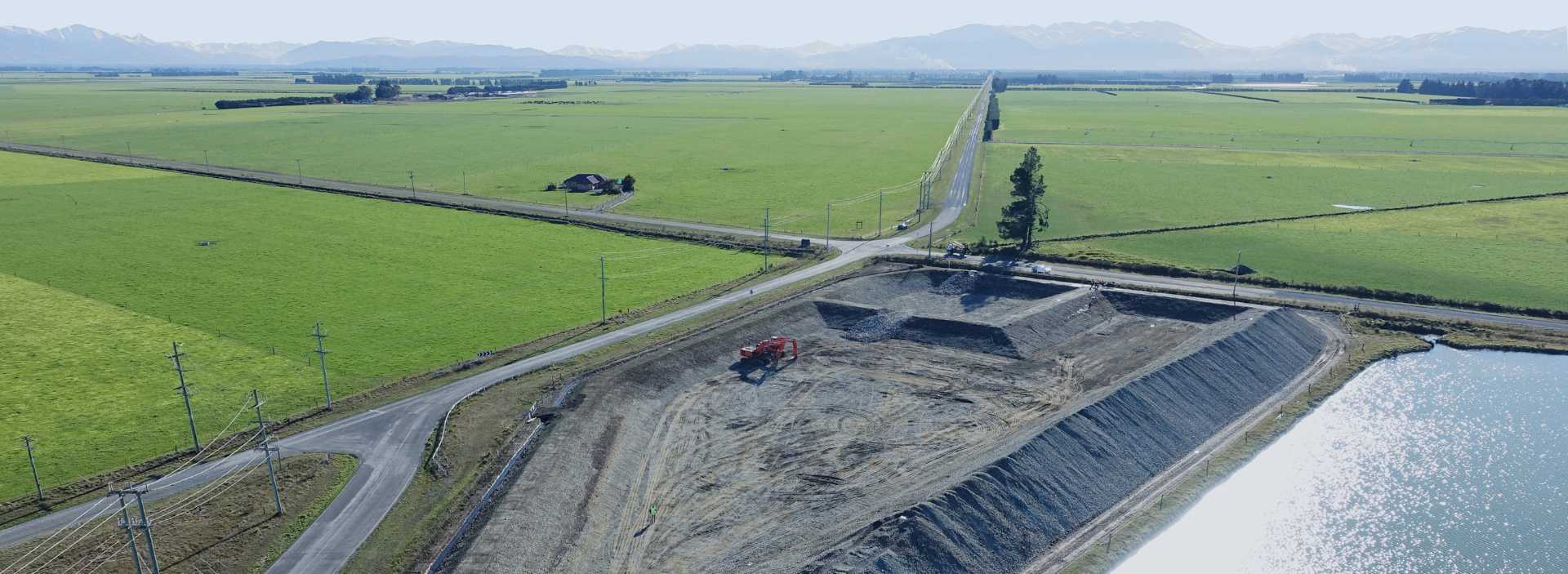NEWS

IN BRIEF

Water scarcity in Pakistan is no longer a distant risk but a current crisis, as groundwater depletion outpaces natural recharge. This blog explains why groundwater recharge is vital, drawing on global best practices like check dams in India, rooftop harvesting in Nepal, and sand filter systems in Bangladesh, while revisiting Pakistan’s traditional methods such as Karez and Rod Kohi.
Highlighting initiatives in Lahore, Islamabad, Sindh, and Balochistan, it emphasizes the need to scale both community-led solutions and advanced Managed Aquifer Recharge systems. The piece calls for policy reform, innovation, and public engagement framing groundwater recharge as a national priority for long-term water security.
SHARE
Scarcity of water is no longer a future threat but a current reality. In Pakistan and the wider region of South Asia, excessive extraction of groundwater has surpassed natural recharging rates, endangering irrigation, city water supply, and even eventual ecological equilibrium. Groundwater recharging, which used to be a natural occurrence, has become a vital measure of sustainability. But what is groundwater recharging, really, and how can Pakistan draw on indigenous and international best practices?
What is groundwater recharge and why is it needed?
Groundwater recharge is the process by which water descends from the surface sources such as rain, rivers, and irrigation into aquifers below the ground. This happens naturally by infiltration through rock and soil cover. But because of the cumulative effect of climate change, unregulated pumping, and haphazard urbanization, the natural cycle is not functioning in much of the world.
The United Nations World Water Development Report 2022 states that almost half of all people on Earth depend on groundwater, which they use to drink, irrigate, and serve industry. However, aquifers are getting depleted at a higher pace than they are recharged (UNESCO, 2022). Managed Aquifer Recharge (MAR) is gaining wide recognition globally as a strategic instrument to recharge groundwater, supplying sustained water security.
Why recharging is needed:
- Maintain aquifer health and groundwater availability
- Avoid land subsidence and ecological system degradation
- Ensure water access during droughts and seasonal shortages
- Reduce pressure on rivers, dams, and other surface water bodies
International practices of recharging groundwater
Most water-scarce countries are utilizing creative recharge systems in hopes of saving their groundwater resources:
- Artificial recharging ponds: Such nations as the southwestern United States and Australia employ huge infiltration basins, which receive stormwater, letting the water percolate into superficial aquifers (Dillon et al., 2009).
- Injection wells: Treated wastewater in Israel is directly injected into aquifers during off-peak periods, allowing for optimal water reuse and reducing depletion (Kurtzman et al., 2016).
- Urban rainwater harvesting: Germany, Singapore, and some parts of Japan have invested in decentralized rainwater harvesting systems where rooftop runoff is harvested for recharging or household reuse.
- Agricultural MAR: In Spain and parts of North Africa, managed recharge is synchronized with irrigation schedules to enhance groundwater retention and reduce agricultural runoff.
These global examples demonstrate that groundwater recharging is not only a temporary measure, but a cornerstone of sustainable water management.
Best regional practices in South Asia
The area with one-fourth of the world’s population is one of the globe’s most groundwater-reliant areas. Fortunately, the region possesses a rich water wisdom tradition and contemporary adaptation practices:

India – percolation tanks and check dams
India has been a pioneer at the regional level in community-based recharging. At the state level, Gujarat, Maharashtra, and Tamil Nadu constructed thousands of percolation tanks, check dams, and farm ponds which slow runoff of rainwater and allow percolation into the water table. According to a 2021 report by the Central Ground Water Board (CGWB), groundwater levels had increased significantly by implementing check dams in otherwise water-starved districts. This has been due to high-level community involvement combined with state funding.
Nepal – rooftop rainwater collection
Thousands of houses in Kathmandu and other cities have installed rainwater harvesting systems, which capture rooftop rainwater and direct it into water-storage tanks and recharge pits. With irregular monsoon cycles and strong demand on deep wells, the decentralized system has helped ease both water stress and aquifer depletion.
Bangladesh – sand filter recharge systems
The nation, which is both water-stressed and arsenic-affected, has promoted inexpensive but efficient systems of recharging water with sand filters. Apart from recharging underground water, such grassroots facilities even remove harmful pollutants. Such a solution is ideal particularly among rural and peri-urban communities which are ill-equipped. These rural solutions hold important, culture-appropriate lessons for Pakistan, particularly because they are low cost and nonpolluting.
The Groundwater Emergency in Pakistan
Pakistan is facing one of the most severe water crises in the world. The country crossed the “water stress” threshold in 1990 and the “water scarcity” mark in 2005. By the end of 2025, the Pakistan Institute of Development Economics (PIDE) estimates the annual water availability may drop below 500 cubic meters per capita, well below the international water scarcity threshold.
According to the Pakistan Council of Research in Water Resources (PCRWR), groundwater levels in cities like Lahore, Quetta, and Bahawalpur are falling at an alarming rate, up to one meter per year in some locations. The NASA GRACE satellite mission has identified the Indus Basin aquifer as the second most overdrawn aquifer in the world, after the Arabian aquifer system.
Key drivers of groundwater stress:
- Overuse of tube wells by agriculture (over 1.2 million tube wells in Punjab province.
- Urbanization with non-permeable surfaces reducing infiltration
- Poor rainfall management and flash floods with non-existent retention structures
- Lack of water pricing and regulation for groundwater extraction
If current patterns persist, rural and city communities alike will experience severe deficits, which can endanger agricultural production, public health, and economic viability.
What’s already occurring: groundwater recharge in Pakistan
Nevertheless, some initiatives in Pakistan reflect the rising realization of the value of groundwater recharge:
-
Punjab rainwater harvesting and recharge wells (Lahore, Faisalabad, DG Khan)
The Punjab Intermediate Cities Improvement Investment Program (PICIIP) has experimented with recharging wells in urban parks and green belts. Jail Road and Gulberg’s wells in Lahore are recharging the aquifer by capturing rainwater runoff. Similarly, DG Khan and Sargodha are experimenting with small-scale recharging systems monitored by the technical assistance of the Urban Unit.
-
Islamabad’s Rainwater Recharge Initiatives
The Capital Development Authority (CDA) has installed several rainwater recharge wells in parks, green belts, and public buildings. These are especially crucial given that Islamabad is experiencing an annual groundwater level drop of 2–4 feet in some sectors (PCRWR, 2023).
-
Balochistan, reinstatement of ancient Karez systems
The Karez systems dating back centuries (also referred locally as Kahan), underground water canals which draw water from foothills to habitation, are being rehabilitated by the locals and NGOs in Ziarat, Pishin, and Mastung districts. As they recharge aquifers naturally and are climate-resilient, they are a reliable water infrastructure setup. Such initiatives are aided by organizations such as ICIMOD and Hisaar Foundation.
-
Rod Kohi rehabilitation in KP and Southern Punjab
In Tank and D.I. Khan, there are initiatives towards the restoration of Rod Kohi (hill torrent) systems, which are used to capture seasonal runoff and restore groundwater. Such infrastructure slows and spreads the waters of flash floods on plains, increasing natural percolation. Such systems by different names are found in various parts of Pakistan. In Punjab and Khyber Pakhtunkhwa (KP), they are referred to by the name Rod Kohi (which respectively mean “torrent bed” and “mountain” in both provinces). Sailaba is their name in Balochistan, and Nai in Sindh.
-
Sindh Pilot Projects – groundwater recharge through treated wastewater
The Sindh government has introduced pilot schemes of greywater treated by residential societies being used in landscape irrigation and recharging of aquifers. Such a facility is presently under consideration in Korangi Industrial Area.
These examples, even if they are still emerging, demonstrate increased public and institutional awareness of the significance of recharge in both rural and urban situations.
High-investment versus cost-effective solutions of recharging
Affordable solutions
- Rainwater harvesting pits: small recharge pits in schools, mosques, and housing societies can be built at minimal cost, especially in water-deficient urban centers.
- Age-old systems: Restoring the centuries-old Karez (underground canals) of Balochistan or Rod Kohi (hill torrent systems) of KP can help restore natural recharging channels.
- Farm ponds and check dams: Low-technology solutions utilizing locally available materials both at village and homestead levels can be employed to channel rainwater towards recharging aquifers and supporting irrigation.
Relatively pricey but very effective solutions
- Managed Aquifer Recharge (MAR) schemes: Designed infiltration ponds, injection wells, and recharge trenches, aided by real-time sensors and GIS mapping, can increase the efficacy of recharge, particularly around industrial zones such as Islamabad’s ICT Zone or around Faisalabad.
- Wastewater treatment and reuse: Treated greywater from housing societies and industries can be used for recharge, but requires significant investment in filtration and monitoring systems.
- Information-based water governing systems: Application of water metering, machine-learning-based monitoring, and central data hubs to guide where and when the recharging interventions need to be carried out.
Recommendations and future direction
- Policy-level responses:
- Improve legislation governing groundwater extraction and prescribing mandatory recharge facilities for newly developing housing societies and industrial parks
- Integrate groundwater recharge into master plans of cities and rural development plans.
- Community involvement:
- Organize national awareness campaigns advocating water saving and recharge infrastructure.
- Train masons and farmers on construction and maintenance of recharging systems.
- Incentives and innovation:
- Offer subsidies or tax benefits to families and organizations embracing recharge practices.
- Invest in research collaborations with universities and the private sector to experiment and scale up new recharge technologies.
Groundwater is Pakistan’s hidden but fast-depleting lifeline. With climate shocks intensifying and demand surging, managing and restoring aquifers must become a national priority. The country can no longer afford to view recharge as optional, it is essential for survival. By learning from successful models in India, Nepal, and Bangladesh, and aligning these with modern technological tools and localized strategies, Pakistan can build a resilient, water-secure future for its people.
About the Author:
Abdul Aleem Chaudry is the Program Officer at Accountability Lab Pakistan, and can be reached at aleem@accountabilitylab.org


